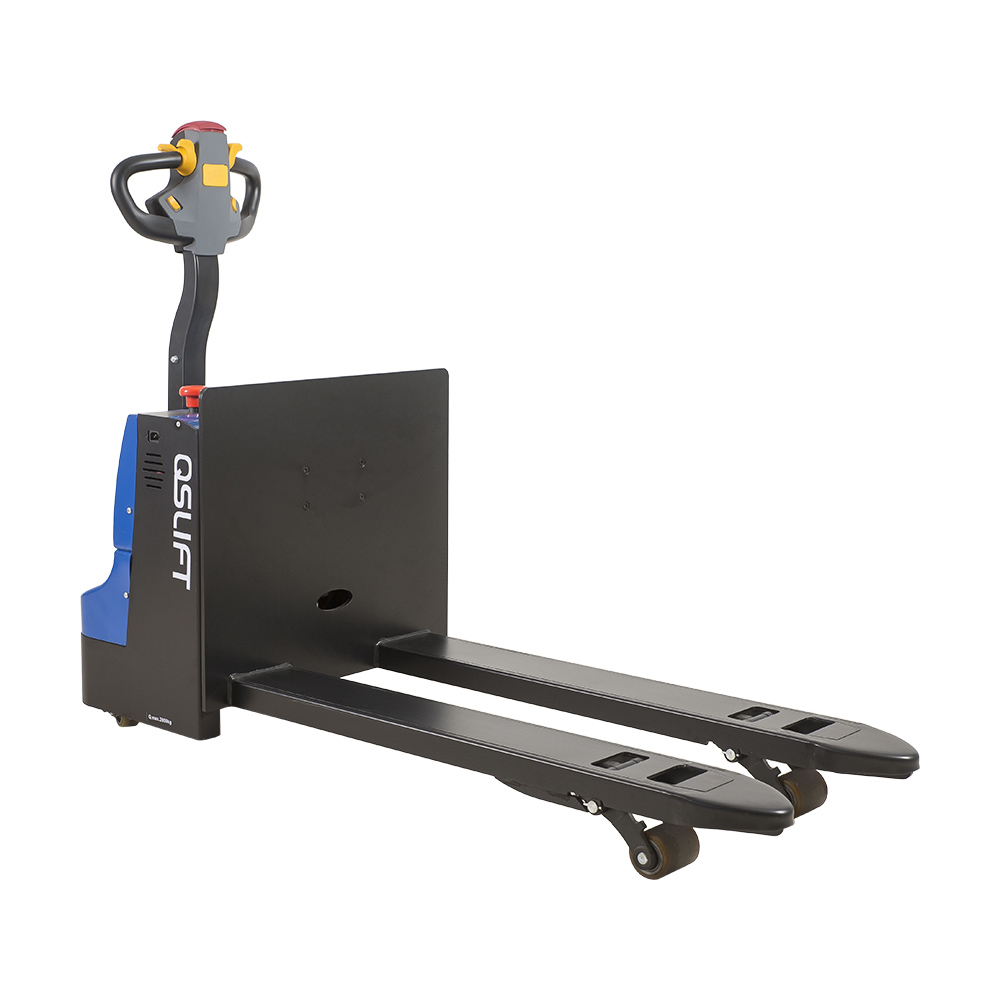Checking the hydraulic system of a power pallet truck is essential to ensure its proper operation and safety. The hydraulic system is responsible for lifting and lowering the forks, and any issues with this system can impact the truck's performance. Here's a step-by-step guide on how to check the hydraulic system of a power pallet truck:
Safety Precautions:
Before you start, make sure to follow safety precautions:
Ensure the power pallet truck is turned off and the key is removed (if applicable).
Wear appropriate personal protective equipment (PPE), including safety goggles and gloves.
Perform the inspection in a well-ventilated area to minimize exposure to hydraulic fluid and fumes.
Materials and Tools Needed:
Flashlight (if working in low-light conditions)
Clean rags or absorbent materials
Manufacturer's manual for reference
Checking the Hydraulic System:
Inspect for Leaks:
Start by visually inspecting the entire hydraulic system, including hoses, connectors, and the hydraulic reservoir, for any signs of hydraulic fluid leaks. Look for wet spots, stains, or puddles of fluid.
If you find any leaks, address them promptly by tightening loose connections, replacing damaged hoses, or sealing any punctures or cracks.

Check Hydraulic Fluid Level:
Locate the hydraulic fluid reservoir on the power pallet truck. Refer to the manufacturer's manual if you're unsure where it's located.
Ensure that the hydraulic fluid level is within the recommended range. If the fluid level is low, add the manufacturer-recommended hydraulic fluid to bring it up to the proper level.
Inspect Hydraulic Hoses and Connections:
Examine the hydraulic hoses and connections for any visible damage, such as cracks, bulges, or signs of wear. Pay close attention to hose fittings and connections for any signs of leakage.
Tighten loose fittings and replace any damaged hoses or connectors.
Operational Test:
Turn on the power pallet truck and operate the hydraulic system to ensure it functions correctly. Raise and lower the forks several times to check for smooth and consistent operation.
Listen for any unusual noises, such as grinding or groaning, which could indicate problems with the hydraulic system.
Observe the speed and smoothness of the fork movement. If there are delays or erratic movements, it could be a sign of hydraulic system issues.
Check for Proper Load Capacity:
Verify that the power pallet truck can lift and carry loads up to its specified capacity without straining or exhibiting any issues.
Test the power pallet truck with different load weights to ensure consistent performance.
Review Manufacturer's Recommendations:
Refer to the manufacturer's manual for specific maintenance guidelines and inspection intervals related to the hydraulic system. Follow these recommendations to ensure proper maintenance.
Record Inspection Details:
Maintain a detailed record of the hydraulic system inspection, including the date, any issues or findings, and any maintenance or repairs performed.
Regularly checking and maintaining the hydraulic system of your power pallet truck is crucial for safety and efficient operation. Address any identified issues promptly to prevent more significant problems from developing.










